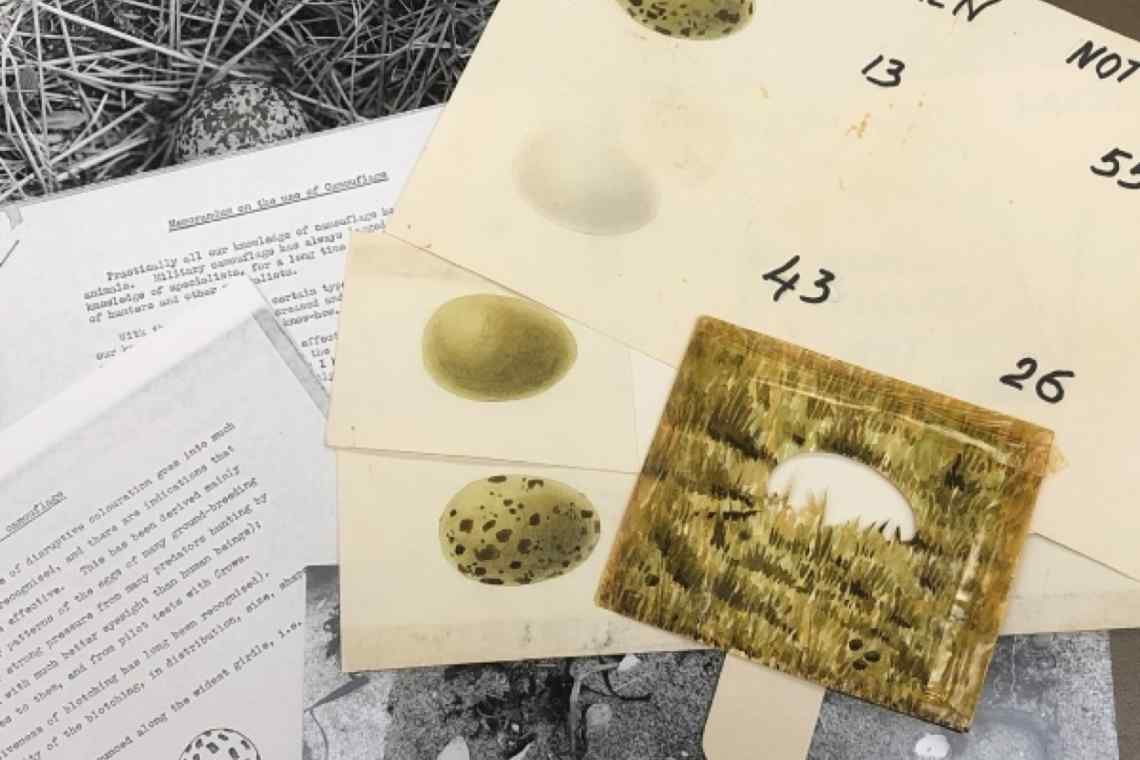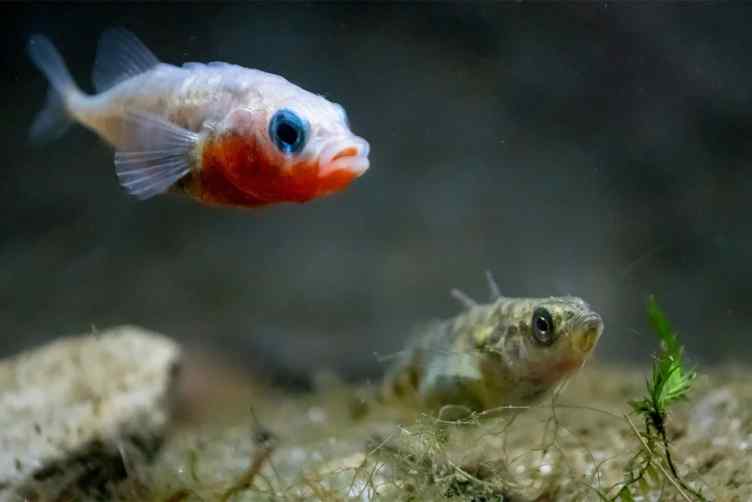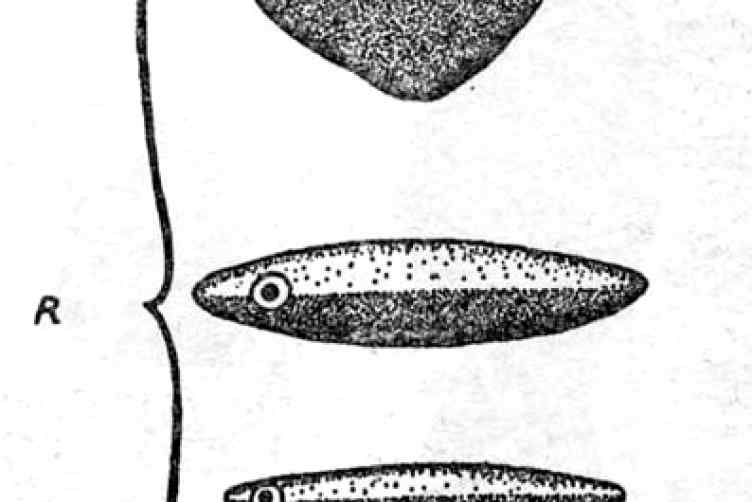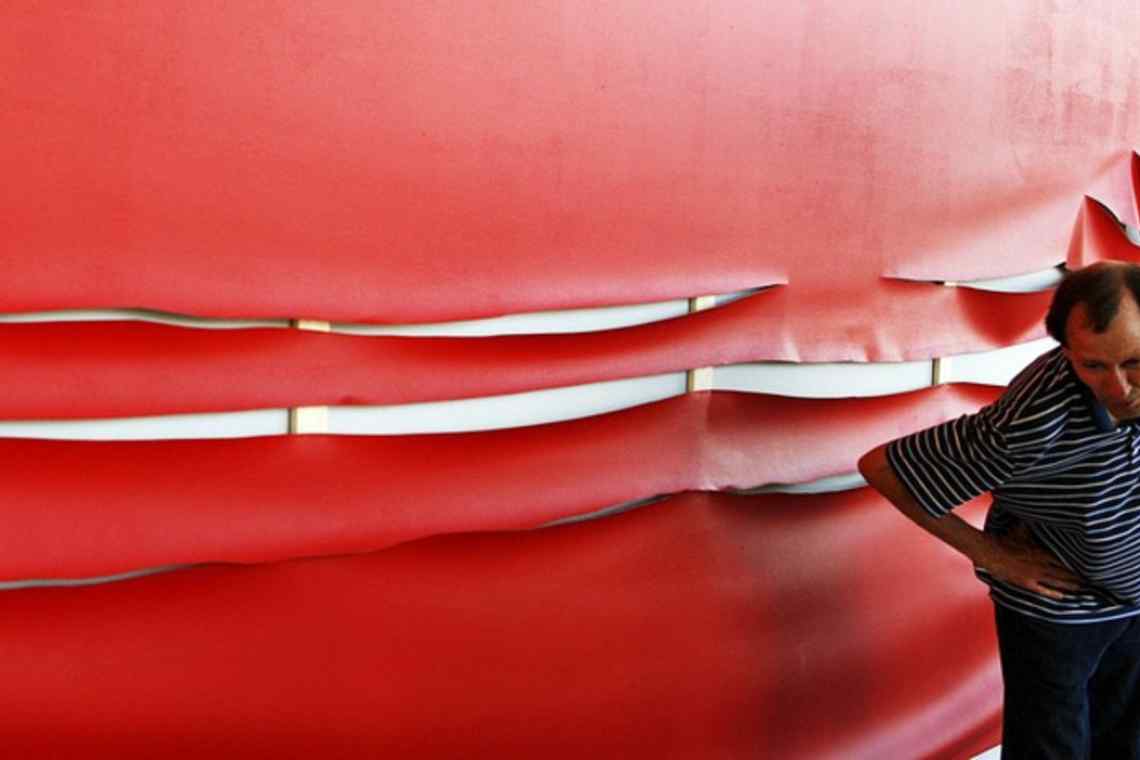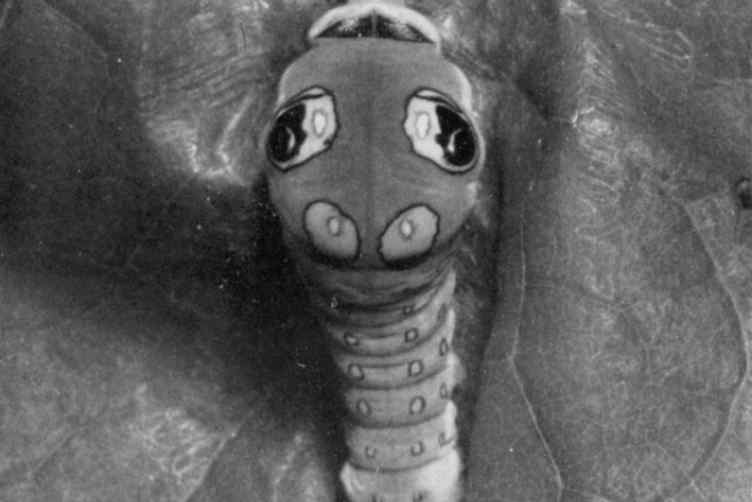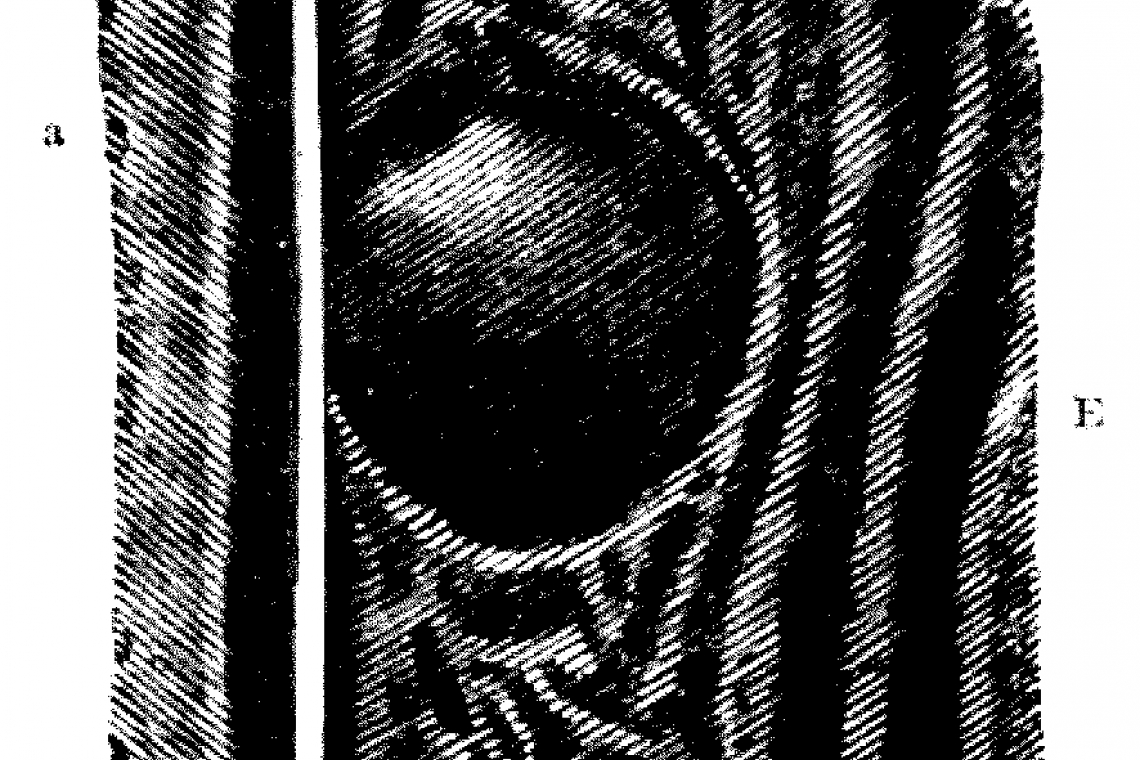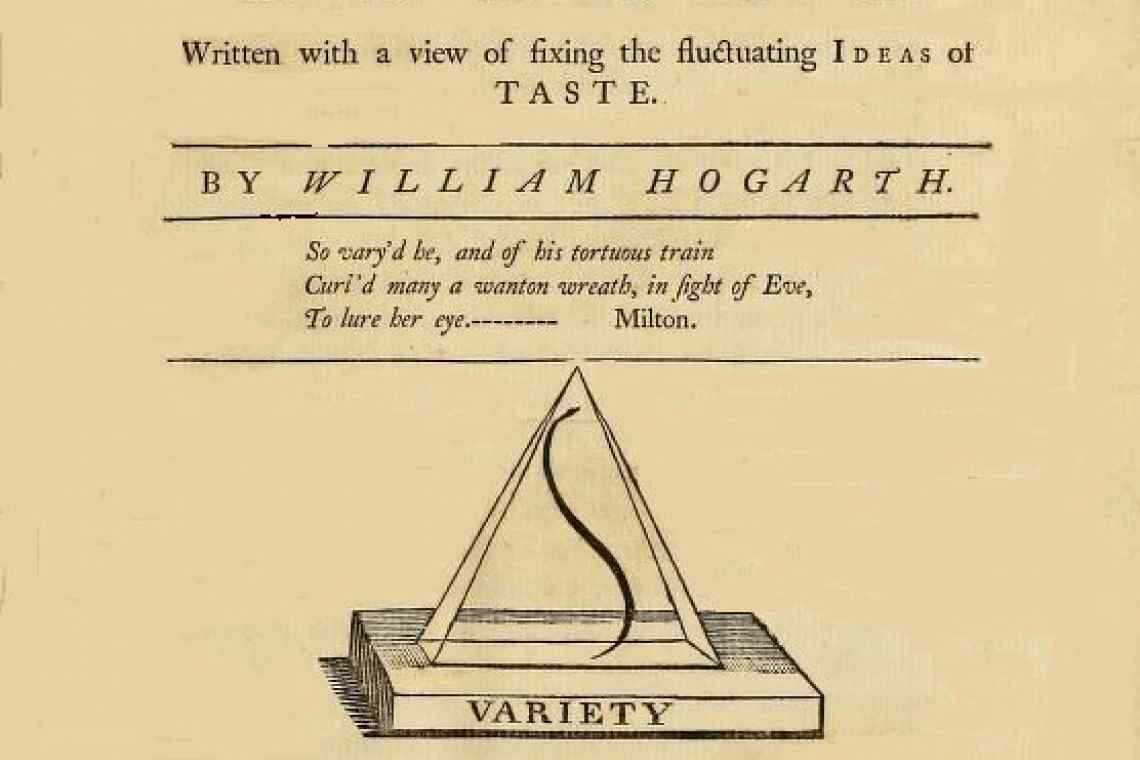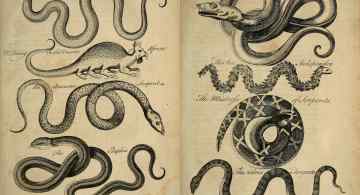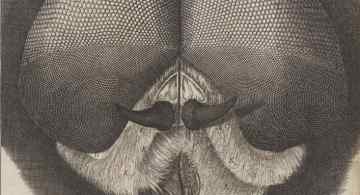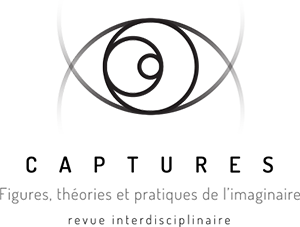I discovered in nature the nonutilitarian delights
that I sought in art. Both were a form of magic, both
were a game of intricate enchantment and deception.
Vladimir Nabokov1
Of Beaver Dams and Ant Cathedrals. Design without Designers
Already in their name, the “humanities” bear a historical self-justification that expressis verbis distinguishes them from those sciences that deal with nature2. Outlining the object of study and the method of art history as an explicitly humanistic discipline, the founder of Iconology, Erwin Panofsky (1892-1968), defined that human beings were the only animals whose products transported ideas separately from their mere material existence. It was reserved for them alone to use and perceive contexts in sign operations, in which the idea of a concept or a construction could detach itself from its forms of expression. “Other animals use signs and contrive structures, but they use signs without ‘perceiving the relation of signification,’ and they contrive structures without perceiving the relation of constructions.” (1955: 5)
While, according to Panofsky, the dams of beavers were the products of an immensely complicated, yet planless construction-work, they were to be differentiated from the buildings of human architects, who, in turn, would be able to premeditate their activities, for example with the help of drawings. To the chief iconologist professionally occupied with the quest for symbolic meaning in artworks, “man’s signs and structures” inhabited a special place as records within all of nature and the animal realm “because, or rather in so far as, they represent ideas separated from, yet realized by, the process of signaling and building,” (5) which were then to be studied and, in some sense, retraced by the humanist.
The underlying notion of “representation” in human artifacts as more or less reliable testimonials of their maker’s intention or of a time period’s ideas has long and rightfully been challenged from a postmodern perspective, but it must also be challenged with regards to the exclusive place of human artifacts within the realm of nature (Barthes, 1967 [1953]: 25, 61-67, 74).
In his grand tour on the evolution of consciousness, From Bacteria to Bach and Back, philosopher Daniel Dennett pointed out a remarkably similar case of construction-work analogy to Panofsky’s, that turns his idea on its head, by juxtaposing a termite castle with Gaudi’s La Sagrada Familia (1882-). Both appear, by chance, rather similar in their overall shape and structural complexity, but they could not be more different in their genesis and construction with regards to intentionality and representation — the termite castle being the result of a seemingly clueless and unintentional, bottom-up concerto of construction without blueprints or bosses, the Sagrada Familia being the product of a top-down process of careful planning and ideation by an individual genius (Dennett, 2017: 51-60). Yet, Dennett claims, while Gaudi certainly had his own intelligent reasons for his design that he may have wanted to represent, nonetheless and similarly, there are reasons for the design that was created by the termites (51). While the termites, as far as we know, do not possess the ability of comprehension, they are nonetheless operating impressively with “competence without comprehension” (50, 59). Both Panofsky’s beaver dam and Dennett’s termite castle are, in this regard, magnificent examples of creative skill and marvelous design without intelligence, that on their part display what Dennett calls “free-floating rationales” (50), reasons created by endless cascades of the unintelligent process of evolution. Simply put, the termite castle magnificently displays the principle of design without a designer. While the animals cannot (and need not) claim reasons for their castles as their own, scholars would not do right by either human or animal architecture in judging them solely on a maker’s supposed intentions, on the effort of planning, or symbolic investment: the artifact is not, in Panofsky’s sense, metaphysically “endowed with ideas” in the way of an alleged “inherent” quality. Rather, borrowing Dennett’s modus operandi, beaver dams, termite castles and the Sagrada Familia all are entangled in multiple rationales or meanings. It is among the great misconceptions among some followers of Darwin (1809-1882) that “creation” in nature no longer had anything to do with teleology once there was no more need for a great creator. Instead, as Dennett points out, “Darwin didn’t extinguish teleology; he naturalized it.” (50) Given, albeit very different teleologies, this means that natural artifacts present a challenge not only to natural sciences, but also to those scholars concerned with the history of aesthetics, art and images.
In the following we will try to plea for incorporating evolutionary and animal design into the sphere of images that ostensibly extends beyond the realm of human artifice. Turning to images that are not exclusively man-made broadens the scope of non-human concepts of “beauty” and of anthropocentric image theory of a homo faber or homo sculpens (Bredekamp, 2019). While humans as “animal symbolicum” (Cassirer, 1944: 44) indubitably possess a remarkable degree of ability to communicate and reflect upon themselves through symbolic articulation, they have never been the only image-producers, nor do they even stand alone in their reflexive use (Bredekamp, 2016). It stands to reason, that not only their own images, but also natural images, must be taken seriously in their possession of an autonomous quality, uncoupled from the process of their creation (Bredekamp, 2018 [2015]). This is not unique to mankind; all other animals are connected to their image-active basic structures by an infinite number of threads. If the original pictorial realm of design in nature and the animal world is permanently excluded from the horizon of aesthetics, there is a threat, in the words of biologist and zoologist Adolf Portmann, of “the loss of that world which we cannot make ourselves, will never make ourselves” (1973: 157 [our translation]). It should lead to an urgent reassessment of our prevalent notion of imagery. Nature teaches us, that images do not necessitate an intentional “maker” (in the sense of a deliberate designer), but that they, rather, connect design with a function in being seen. We thus propose to understand by “image” any product of design that finds a telos in being visually apprehended and therein provided with meaning that influences the actions of individuals and groups. In this resonance teleology, every image, be it of human, animal or natural origin, is either actively or retroactively imbued with “reasons” and therein action-founding.
Embodying Colour, Form and Movement. Stickleback Theatrics
For the Hamburg based zoologist Jacob von Uexküll (1864-1944), forefather of the “lost discipline” (Allerkamp and Roussel, 2021) of ethology as the science of the social behavior of animals, the dominion of nature was interwoven with signs in all aspects of life processes within what he called the specific Umwelten (environments) of animals3. According to him
[t]he outline and water currents of the pond scallop provide the love symbol of the Bitterling. The change of taste of the tip and stem of the leaves becomes the shape symbol for the Earthworm. The same sound becomes the friend symbol for the Bat and the enemy symbol for the Night Butterfly, and so on in incalculable series. (Uexküll and Kriszat, 1956: 157-158 [our translation])
Following in the wake of Uexküll’s environmental theory, pioneering research in ethology was conducted by two Nobel Prize winners, Konrad Lorenz (1903-1989) and Nikolaas Tinbergen (1907-1988). They explored the social behavior of the animal world with the help of self-made artifacts to study the innate responsiveness of animals to aesthetic stimuli of their environments. For Tinbergen, who described himself as “a kind of hybrid person, neither artist nor scientist but a bit of both,” (1985: 457) artistic practice in watercolors, photographs, and film was not only an integral part of, but rather a tool for knowledge in his own research practice4. In his experimental setups, which put Lorenz’s theories (1943) to the practical test, animals were confronted with both authentic bodies and a variety of abstracted replicas that selectively varied and tested characteristics in certain colors, shapes, and movement patterns. “[T]he scientist’s laboratory has turned into an artist’s workshop,” exclaimed, with mixed excitement, art historian Ernst Gombrich (1992 [1956]: 86), who was impressed by Tinbergen’s use of self-made artifacts. Picking up on a Darwinian bon mot to which we will return later, Gombrich jokingly suggested, however, that he did not believe the mystery of Raphael could one day be solved by studying seagulls, one of Tinbergen’s central research subjects (87)5.
Another main example of what in ethology has become established as the concept of innate “sign stimuli” (also “releasers”) was demonstrated by Tinbergen in his studies of three-spined sticklebacks (gasterosteus aculeatus), which are still authoritative today. When male sticklebacks isolate themselves territorially for mating in spring, they construct a nest from sand, grasses, and filamentous algae which they cover with a sticky substance from their kidneys and upon which they work structurally until a round tunnel shape is formed (1952: 22). However, it was not this artifice of construction of the stickleback that fascinated Tinbergen, but rather the anchoring of its social behavior in its immediate stimulus-bound nature, which had established itself in various forms. One is the striking “nuptial dress” (1948: 9) that the stickleback puts on immediately after nesting: the eyes of the males take on an iridescent blue color, their backs turn bluish-white, and a red that is as dominant as it is brilliant flourishes on their throats and bellies. While these color features attract females to lay their eggs in the nest for subsequent fertilization, they also signal to territorial rivals a readiness for combat and therefore possible danger. As Tinbergen’s experiments with different models on fine wires showed, one key stimulus for both sexes was the perception of the deep red color. For females it has a magical attraction, which is why they willingly follow even unrealistically shaped red models to the nest, whereas sticklebacks without this coloration are mostly met with cool indifference. To the stickleback male, the same intense coloration gives the signal for territorial defense. Surprisingly, Tinbergen also observed that the defense stimulus occurred even when a red mail truck regularly passed by the laboratory window at a distance of about 100 (yards (1952: 23). The fish saw, proverbially, red, all while his eyes well perceived the other, completely dissimilar shapes.
These “curious” color-induced responses were identified as innate responses to key aesthetic stimuli in animals, that were seemingly automated and incontrollable. There is, however, also a bridge to be built to similar predispositions in human behavior. While, as Gombrich noted, humans pride themselves on their ability “[to] remain in control while we half-surrender to counterfeit coins, to symbols and substitutes,” (1992 [1956]: 87) vast modern industries do at the same time successfully exploit the consumption of so-called “supernormal stimuli,” from junk food to garish, cute toys or erotica (Barrett, 2010). Upon exploring the cultural dimension of the abstract primary color red, one also encounters its potential to move people to tears, to trigger fear or aggression, and its rich cultural history as a symbol of life, lust, anger or aggression (Pastoureau, 2017)6. Barnett Newman’s allusive question through his series Who’s Afraid of Red, Yellow and Blue (1966-70) testifies to the extent to which the insight of being triggered by impulses through form and color generated resistance that ultimately manifested itself several times in violent attacks on the artworks (Bredekamp, 2018 [2015]: 174; Gamboni, 1997).
In sticklebacks, it is by no means only a matter of color or, more precisely, the light spectrum that strongly influences their mating behaviour (Boulcott, 2003). In addition to the color-intensive “makeover” of the male in the mating season, there are other decisive aesthetic signals, such as the curves of the bulging belly of the stickleback female from the eggs, which, in turn, serve independently to provoke males into attempting approach, regardless of the appearance, sex or the nature of the presented counterpart (Tinbergen, 1952: 24).
In addition to colour and form, it is ultimately dance and ostentatious movements that reveal the astonishing degree to which the complex of mating consists in image-active embodiments: females are lured ever closer to the male’s nest by an almost magnetic “zig-zag dance.” Territorial rivals, on the other hand, are intimidated by ostentatious threatening maneuvers in which both males turn into a vertical position and dig their snouts into the sandy soil. Viewed in this light, what makes Tinbergen’s series of experiments particularly fruitful for image science goes beyond the mere machinations of sign stimuli in colors, shapes, and the “fixed action patterns” of dances. It is the sheer extent and the determining role of aesthetic over-forming and mediation within the overall, existential mating complex and its associated territorial fights that already made Tinbergen take notice: “It struck us, as it has often struck observers of other animals, that the belligerent male sticklebacks spent little time in actual fighting. Much of their hostility consists of display.” (1952: 24)
The sheer ubiquity of signs, display and ostentation indicate that stickleback mating in all its facets evolved as an image-practice that is steered and negotiated to a remarkable degree by aesthetic formations, in which the sensually perceptible is fraught not only with significance but with meaning and consequence. One might even go as far as linking the stickleback dances to a deeper insight that art historian Edgar Wind, a student of the initially quoted Panofsky, expressed in reference to Aby Warburg: “All expression through muscular movement is metaphorical.”7 (1931: 175 [our translation])
The mating of sticklebacks is just one example of nature’s theaters of embodiments, that are both choreographed and improvisational. While the animals themselves take center stage as protagonists, they are at the same time fatefully entangled in a performance practice of images written onto their bodies via evolution.
Irrational Exuberance. Darwin and the Problem of Beauty
Still in the last lines of his epochal publication On the Origin of Species by Means of Natural Selection, Darwin praises the natural diversity of forms and of beauty. His vision of a “tangled bank, clothed with many plants of many kinds, with birds singing on the bushes, with various insects flitting about, and with worms crawling through the damp earth,” (1859: 489) comes close in its hymnal radiance to the panoramas with which contemporary painters such as Frederic Edwin Church evoked the sublimity of nature8. The “grandeur in this view of life” was to see how from most simple beginnings “endless forms most beautiful and most wonderful have been, and continue to, evolve.” (489-490)
Natural selection as the “struggle for survival” can account for some of the most stupendous wealth of these physical forms. Among them are instances of artful deceit in animals through the embodiment of signals that comprise a vast variety of phenomena of either mimicry, discovered by Darwin’s contemporary naturalist Henry Walter Bates (1825-1892), or camouflage in both predators and prey9. The “pictorial” qualities of such animal devices are conspicuous and have often been acknowledged with awe, perhaps most emphatically by the avant-garde intellectual and intermittent surrealist Roger Caillois (1913-1978), who was hypnotized by the expressive example of the spicebush swallowtail caterpillar (papilio troilus) with a coloration around the eyes that gives the impression of a medusa-like stare (1960: 54, 151; see also Bredekamp, 2018: 268). A key to the question of the meaning and origin of nature’s aesthetic formations, however, lies in Charles Darwin’s still underestimated theory of Sexual Selection, which he understood as a necessary explanation complementary to evolution by natural selection. For Darwin, it was a different kind of ocelli that for a long time had left him restless and the sheer sight of which had vexed him to the point of nausea: “The sight of a feather in a Peacock’s tail, whenever I gaze at it,” he begrudgingly admitted, “makes me sick!” (Burckhardt, 1993: 140)10
The male peacock’s plumage, in particular that of its relative the male Argus Pheasant (argusianus argus) had long been a “feather in the cap” of contemporary Victorian opponents, who used it for their claim of the most skillful hand of an ingenious creator, that was needed, due to its seemingly purposeless yet strikingly perfect trompe l’oeil of balls and sockets. (Voss, 2003: 79-81) Yet, in his Descent of Man and Selection in Relation to Sex, wherein he laid down the principle of sexual selection, Darwin was able to finally address this salient issue and dissect the claim:
No one, I presume, will attribute the shading, which has excited the admiration of many experienced artists, to chance — to the fortuitous concourse of atoms of colouring matter. That these ornaments should have been formed through the selection of many successive variations, not one of which was originally intended to produce the ball-and-socket effect, seems as incredible, as that one of Raphael’s Madonnas should have been formed by the selection of chance daubs of paint made by a long succession of young artists, not one of whom intended at first to draw the human figure. (2003 [1871]: 434-435)
While from an evolutionary perspective, this was indeed and logically what had happened, Darwin had found a most clever solution to evidence this “incredible” thesis as a morphological possibility. He took it upon himself in the following to meticulously demonstrate a possible path of the eye-shaped image’s evolution via a painstaking formal analysis of a series of close-up etchings of several selected secondary wing feathers (434-442): through a precise operation of image analysis, he was finally able to sufficiently prove the possibility of an evolutionary gradation “from a mere spot to a finished ball-and-socket ocellus” (435)11. To Darwin, the case of the male argus pheasant was of eminent interest, as it provided a mesmerizing example for the principle of sexual selection: the most refined imagery serving no other purpose than sexual charm. Thus, as a major driving force behind this and other, seemingly futile, and irrational exuberances of ornament, was found to be female mate choice and the coevolution of taste and male beauty (Prum, 2017).
No theory has ever placed a higher and more central value on the active power of images than Darwin’s principle of sexual selection, wherein image embodiment becomes one of the central agents of animal evolution, no less important than adaptation to changing living conditions. Darwin’s theory, that, in some sense, postulated a “procreation of the prettiest” was, however, fought against from the beginning, dismissed as an aberration, and rejected (Levine, 2003: 44-45) only to be more or less entirely supplanted by a rigid understanding of evolution according to Herbert Spencer’s (1820-1903) pragmatic formula of the “survival of the fittest” (1898 [1864]: 530). This understanding was inextricably linked to a historical society of patriarchy, war, mercantilism, and utilitarianism of the early Industrialization Age; the fact that the totalitarianism of the 20th century gained an apparently scientific basis in this way led to devastating racially-based exterminations as well as the legitimization of imperial strategies (Himmelfarb, 1959).
A fundamental misunderstanding of Darwin’s critics of this natural theory of imagery lay in the fact that they equated the category of beauty with harmony and unison and therein with a concept of European classicism. Rather, with his concept of beauty, Darwin reached back to a theory of art that had made intrinsic change, that is evolution, and had thus linked the concept of beauty to that of variety. This notion was closely associated with that hot-headed artist and art theorist William S. Hogarth (1697-1764), with whose work every schoolchild in Great Britain in Darwin’s time was already familiar, and which was considered as a genuine English contribution to European art history12. Hogarth did not propagate unchanging harmonic perfection, but instead took note of the dynamism of gradual deviation in approaching what he referred to multiple times as the “Je ne sçai quoi” (1753: VII) of beauty.
The title page of Hogarth’s Analysis of Beauty (1753) already establishes the link of beauty to variety on its titlepage. Its picture shows the famous pyramid prism of variety containing the s-shaped serpentine line of beauty with a tiny thickening at the head. Hogarth described his theory of beauty using concrete examples from nature, but also from works of art and ordinary everyday objects, in which he identified the serpentine line as a recurring perceptible basic element. Beauty unfolded to the eye in the variations of such lines (Bredekamp, 2004: 129). According to Darwin, natural artifice has a starting point in the female gaze, which, through cognitive coevolution encounters and judges the surplus of divergence of form that fuels the process of image evolution (Elsner, 2005; Menninghaus, 2010). It can be understood as a miracle of its own kind that an English artist, a hundred years before Darwin, drew near to this relationship (Bredekamp, 2009).
Already with Hogarth that image-related bridging of culture and nature which was so definitively negated by Panofsky, was laid out. The meandering S-line foreshadowed the principle which Darwin developed as a second, but necessary model of evolution to come to grasps with the images of nature in their abundance and irrational exuberance: beauty as an expression and never-ending surplus of change. In it reigns irresistible force and the search for ruleless aberration.
Four Advances. Nature as an Image-Active Laboratory
Darwin’s theory of sexual selection that posits irrational beauty as the telos of an image-active nature has experienced renewed attention in recent decades. One major theory which received much attention as well as criticism was an explanation attempt by Amotz Zahavi (1928-2017), who initially sought to solve the problem of enforcing seemingly superfluous and struggling life forms with the help of the “handicap principle” (Cronin, 1991; Levine, 2003: 44-45). The value of this theory lay in the fact that it took Darwin’s sexual selection seriously as an image theatre of evolution, but its aim was ultimately to transfer sexual selection into the rational and reliable realm of natural selection. According to Zahavi, the abundance of seemingly useless ornament which was neither suitable for fighting nor for food supply had its function in indirectly showing a fitness that could afford these gimmicks (Gadagkar: 2003).
None other than Richard Dawkins, however, has attested to this and similar attempts to drain Darwin’s proposal rather than develop it, including his fierce competitor Alfred Russel Wallace (1823-1913), who conversely places utility over ornament:
Modern Wallaceans such as … Zahavi see bright colours and other sexually selected advertisements as honest and uncheatable badges of true quality: health, for example, or resistance to parasites. Darwin would have no problem with that, but he also was prepared to countenance pure aesthetic whim as a selective force in nature. (Dawkins, in Darwin, 2003 [1871]: xiii)
Dawkins’ final judgement emphasizes the supporting role of a superficially useless aesthetic: “What sexual selection explains, better than natural selection, is diversity that seems arbitrary, even driven by aesthetic whim.” (xxvii)
A second advance by Horst Bredekamp took up this criticism of the handicap principle, notably recognizing the effectiveness of perception of shape and deviation in the counterpart in the whole nature of the handicap principle. As an activity of the image, it is jointly responsible for the interplay between aesthetic experience of the other and design (Bredekamp, 2006 and 2007). Building on Winfried Menninghaus’ attempt to locate Darwin’s concept of beauty within the history of science (2003), the concept of image acts provides the premise for sexual selection as one of the foundations of human images. From the side of the natural sciences, Christiane Nüsslein-Vollhard’s 2017 book Schönheit der Tiere (“The Beauty of Animals”), published on the basis of her research on fish patterns, and Richard Prum’s major publication of the same year on Darwin’s “forgotten theory” from an ornithologist’s perspective, represent a third, major impulse in the same direction. Finally, the thesis of the production and reflection capacity of “ideas” (Panofsky) or “symbols” (Cassirer) as the exclusive feature constituting a unique human position vis-à-vis other animals has been challenged, as a fourth approach, especially by recent findings on possible forms of symbolic or ritual image behaviours of chimpanzees of West Africa. These practices range from accumulative stone throwing into treasure-heaps in tree stumps and forking roots as a schematic image act, to the tender play with imaginatively animated stones and wooden creations, which, for the chimpanzees, appear to symbolize dolls of their still unborn offspring (Kühl, 2016; s.a., 2016; Bredekamp, 2016): “They are treating them like a baby.” (s.a., 2019: 1 min 15 s)
In all these reformulations of animals interweaving with aesthetic signals, symbols, and images, including ones they produce, a concept of images reigns that not only reaches into the realm of nature but is an essential part of its processes. Why these processes take place in this way cannot yet be explained, much like the question of how the origin of matter and life is to be understood, but can be observed, studied, and analyzed. This can make an essential contribution to answering the question of how images come into being through the interplay of external experience and design, the question of what constitutes them and the autonomous aesthetic power they are capable of unfolding.
- 1. NABOKOV, Vladimir. 1948. “Butterflies”, The New Yorker, June 12, reprinted in Speak, Memory. An Autobiography Revisited, New York: G. P. Punam’s Sons, 1966, p. 125.
- 2. The authors acknowledge the support of the Cluster of Excellence “Matters of Activity. Image Space Material” funded by the Deutsche Forschungsgemeinschaft (DFG, German Research Foundation) under German’s Excellence Strategy – EXC 2025 – 390648296. We also would like to thank Regine Hengge and John Nyakatura very much for their fruitful exchanges with us from the viewpoint of biology.
- 3. On his father’s sign theory see also Thure von Uexküll (1992).
- 4. Tinbergen’s important relationship to the arts as tools of science is also described by Lary Shaffer (1991) and by Robert Scott Root-Bernstein (2007).
- 5. Gombrich’s skepticism rightfully extended to the year 2000, when he criticized the universalistic art theory of neuroscientist V.S. Ramachandran, who, in a reductionist approach relying on the ethologist concept of (supernormal) stimuli claimed: “all art is caricature” (Ramachandran and Hirstein, 1999). A laudable attempt at an integrative framework of the aesthetics of nature and art in the footsteps of Gombrich is, however, to be found in Irenäus Eibl-Eibesfeldt and Christa Sütterlin (2007).
- 6. On viewers being moved to tears, even in front monochrome paintings see Pictures and Tears by James Elkins (2001).
- 7. On Wind’s expression see “Universalität der Pathosformel. Der Leib als Symbolmedium” by John Michael Krois (2002: 296).
- 8. See, for example, Darwin. Kunst und die Suche nach den Ursprüngen by Pamela Kort and Max Hollein (2009: 13).
- 9. A broad overview, addressing the illusionistic qualities of these phenomena is given by H. E Hinton (1980).
- 10. On this topic see the article “‘Augenflecken und Argusaugen’. Zur Bildlichkeit der Evolutionstheorie” by Julia Voss (2003) as well as the work of Richard O. Prum (2017).
- 11. For a more detailed discussion of this use of imagery see Julia Voss (2003).
- 12. Winfried Menninghaus, in his profound study of Darwin’s concept of beauty, traces Hogarth’s importance (2003).

